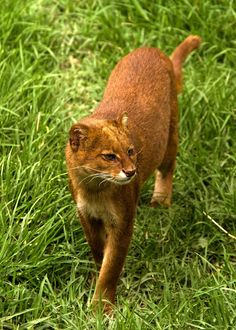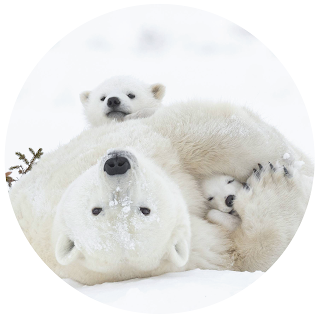Gulf Coast Jaguarundi
Source: http://ingrid.zcubes.com/zcommunity/v.aspx?mid=346686&title=gulf-coast-jaguarundi Gulf Coast Jaguarundi Recovery Plan by Jordan Opet Listing Date and Type of Listing Title: Gulf Coast Jaguarundi Recovery Plan (Puma yagouaroundi cacomitli) Plan Date: 12/20/2013 Listing Status: Endangered (U.S), Threatened (Mexico) Listing Date: 06/14/1976 Location: Southern Texas and Eastern Mexico Plan Status: Final Description and Ecology of the Gulf Coast Jaguarundi Chances are the majority of U.S citizens have never heard of the Gulf Coast jaguarundi ( Puma yagouaroundi cacomitli ). This can be contributed to the rarity of this subspecies. There have been very few sightings of the Gulf Coast jaguarundi over the years. Even if someone happened to come upon the path of a jaguarundi, they could easily mistake it for a slightly over-sized house cat. They also share a similar look to wea...







The fun facts make the information and empathy of this blog better. I love knowing that there are cute things like holding hands or something cool like having storage pockets for food make people read the blog and want to do something to help these creatures. There is so much we can do to help and staying informed is a good point about any animals at risk!
ReplyDeleteMaya Mashiach
BIO227
I really like your organization throughout the blog putting the pictures and some of the main points on the right in the yellow while you kept the majority of the writing on the left. Also you fun facts section was very interesting, especially that they have little pockets to store food.
ReplyDelete~Sage Massey
Cool formatting. Nice to have the shorthand, simple information and outline one the right with more details on the left. Love the pictures. Cute fun facts- especially about holding hands and Sea Otter Awareness week. Sad that the original attempt at recovery (translocation) didn’t work. Hopefully more research can be done to find another survival strategy for this species.
ReplyDelete-Perry Nalle
The layout of your blog is BEAUTIFUL! The way you divided up the sections made it easy to determine when new information was going to be introduced. I really like the yellow column and how it was packed with a lot of information, but you still learn something when reading it.
ReplyDelete-Mckenna Moura
First off, your organization was awesome and I thought it automatically made it look very professional and clear to read. You did a great job of being really clear and descriptive in your blog and on top of that i loved your "fun fact" portion.
ReplyDelete-Parker Ornellas
I did not know that these otters were so threatened by oil spills. It's really unfortunate that they need to be relocated because of the disturbance in their environment. I appreciate your unique layout and especially the depth you go into in your recovery plan. Very informative and well-written post!
ReplyDelete-Shannon O'Hehir
I really liked the layout of your blog! Also, information was very succinct and to the point which I enjoyed.
ReplyDelete-Christine Okimura
I absolutely loved the layout of your blog! It makes it so much easier to find information about the animal and allow navigation to be easy! Also an awesome idea to add in fun facts about the otters and have the short bullets of main threats on the right side and the bulk of information on the left. I also thought it was helpful in including the graph of population to show the expected vs. actual population and the extreme gap between them.
ReplyDelete-Ali Murray
I enjoyed reading all of the fun facts that you included about the sea otters. You made the 'Main Threats' section very clear and easy to understand.
ReplyDelete-Kristen Nagamatsu
I loved the layout and formatting of your blog. The fun facts were especially cute and interesting
ReplyDelete-Bryn Mulligan